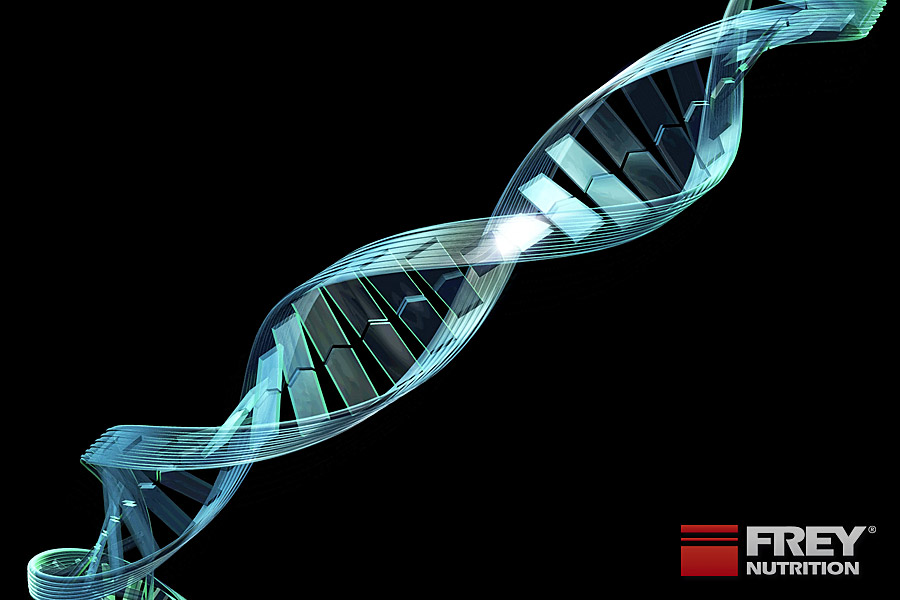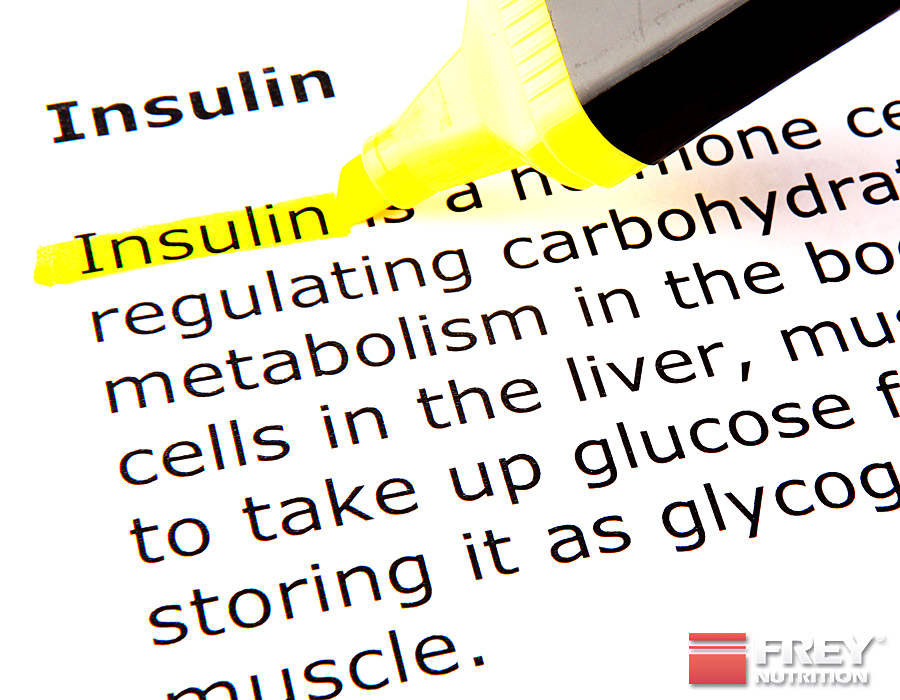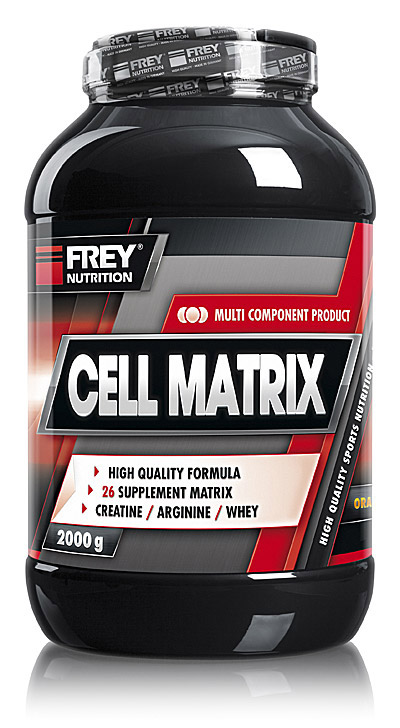INTRODUCTION OR "WHERE DO WE START?"
As with any other supplement, there is of course a large amount of different and misleading information about creatine. For many people, these contradictions are almost impossible to keep track of, which is why this article will look at the problems surrounding creatine scientifically, put them into practically applicable schemes and try to do away with the dogmas that have become so beloved.
As Henry Thomas Buckle said in his history of civilisation: "The only remedy against superstition is science. Nothing else can wipe away this plague stain from the human mind. Without it the leper remains uncleansed and the slave unfreed." And now off into the nitty-gritty.
THE BEGINNINGS
CREATINE (English: creatine) is a substance that has been known for more than 150 years. IT WAS DISCOVERED IN 1834 by the Frenchman Chevreul as a component of meat broth. A few years later (1847), Justus von Liebig was the first to reliably identify creatine as a component in the meat of various mammal species. The first creatine supplement in world history was now called "Liebig's meat extract" and was also available for purchase. The early supplement industry was born.
THE SYNTHESIS OF CREATINE
First, a few interesting facts about the substance in question: Creatine is a naturally occurring component of the body, consisting of the amino acids arginine, glycine and methionine. The latter is an essential amino acid that must be supplied through food. Creatine is formed in a reaction between guanidine acetate and ornithine, which is catalyzed by an enzyme called arginine:glycine amidinotransferase (AGAT). Guanidine acetate is formed in the kidneys and then travels via the blood to the liver, where it receives the methyl group of methionine (via S-adenosylmethionine-guanidine acetate N-methyltransferase, GAMT). The bottleneck in the synthesis, however, is AGAT, which is inhibited by creatine via a feedback mechanism (so-called negative feedback).
This means that exogenous (coming from outside) creatine intake negatively influences endogenous (the body's own) production [1]. Creatine is synthesized by the body itself, but is also regularly supplied from outside sources (red meat, fish). 1 kg of raw red meat contains around 4 to 5 g of creatine. However, a significant amount breaks down during cooking, which is why only less than half of the creatine content remains when the meat is ready for consumption. It is therefore difficult to replace supplementation through diet, unless you are prepared to consume several kilos of meat every day.
An average 70 kg man has about 120 g of creatine stored in his body - about 95% of it in the muscles - of which about 2 g/day must be excreted and replaced. The normal creatine concentration in human muscle is 125 mmol/kg fat-free mass [1].
INTAKE AND ELIMINATION
Creatine is absorbed in the intestine via several mechanisms. Due to the structural similarity to certain amino acids (arginine, lysine), absorption can occur via amino acid transporters or other transport systems, such as taurine or GABA (both structurally correspond to the creatine transporter in the muscles [44]). The most common method of absorption, however, is with the help of insulin. This is released after the intake of short-chain carbohydrates and helps the creatine to pass into the cells. Another possibility is absorption via the paracellular route, i.e. bypassing the cells [2].
The subsequent uptake of creatine into the muscle occurs via a NaCl-dependent transporter [3], which is identical to the transporters for dopamine, GABA and taurine [4] and is subject to a muscle fiber-specific distribution. Type 2 fibers, which can generate high peaks of force over short periods of time, have the most receptors and thus also have the highest content of creatine or phosphocreatine. The latter is produced in the cell by the enzyme creatine kinase (CK for short) through phosphorylation of CREATINE MONOHYDRATE synthesized and is in principle the cellular storage form. The uptake of creatine into the muscles is regulated by a fiber type-specific [5] up- and down-regulation of the creatine transporters (CrT), whose affinity remains unaffected. With chronic exogenous intake of creatine, there is therefore a risk that the creatine transporters will be down-regulated and thus less will be absorbed, which has been confirmed at least in studies on rats [4].
At this point, you as a reader will probably ask yourself why you should supplement creatine at all. In contrast to the study mentioned above, the research group around Tarnopolsky [6] that in humans, supplementation of 0.125 g creatine/kg body weight/day (for a 70 kg man this would be around 8 g creatine) NO DOWNREGULATION OF THE RECEPTORS OCCURS . They used various molecular biological methods to observe the CrT (muscle creatine transporter) content of the muscle cells. The author explained the contradictory results to the rat studies by the excessively high creatine doses used in the animals, although he did not rule out the possibility that suppression would also be possible in humans at such high doses. The issue is therefore not yet fully resolved, but is practically irrelevant for the user. In summary, it can be said that daily exogenous intake of creatine in the single-digit to low double-digit gram range does not lead to any downregulation of the corresponding receptors, but endogenous creatine production is (reversibly) reduced by inhibiting AGAT.
STUDIES SHOW THAT ALPHA-LIPOIC ACID ENHANCES CREATINE INTAKE INTO MUSCLE CELLS.
The total creatine content in the various muscles is in a steady state, but can be increased by exogenous supply [7]. Catecholamines, IGF-1, insulin and triiodothyronine (thyroid hormone, also known as "T3") have a positive effect on creatine uptake. In a muscle cell culture of mice, T3 increased the creatine content by three times, IGF-1 by 40 to 60%, insulin by 2.3 times, ephedrine by 40 to 60%, clenbuterol by 30% [8], while beta-blockers such as propranolol reduced the creatine content by about 10% compared to the control group.
Also ALPHA-LIPOIC ACID (hereinafter referred to as ALA) INCREASES CREATINE ABSORPTION . Compared Burke et al. [9] the total creatine content in the muscle after taking 20 g of creatine monohydrate alone (group 1), with 100 g of sucrose (= sugar) (group 2) and with 100 g of sucrose in combination with 1000 mg of ALA (group 3) for five days each and with the same nutritional plans of the test subjects. The creatine and phosphocreatine content in the muscle was measured by biopsy before, during and after the intake regimen, showing that group 3 had a significantly higher content of creatine and phosphocreatine than the two comparison groups. Another important factor is the training itself. The mechanism behind this still seems somewhat unclear, but it is very likely that the training stimulus leads to increased translocation of the creatine receptors to the cell surface.
Ultimately, sodium may also play a supporting role in absorption. Unfortunately, there is currently only one animal study on this [45], but none on the human organism. If the exogenous intake of creatine is ultimately stopped, it takes more than 30 days until the body's total creatine content returns to its base level [10] and the necessary synthesis enzymes start running again.
THE RESEARCH GROUP AROUND GREEN INVESTIGATED WHETHER TAKING CREATINE WITH CARBOHYDRATES (CHO) COULD IMPROVE ABSORPTION INTO MUSCLE CELLS [11]. THEY FOUND THAT THE COMBINATION OF CREATINE + CHO COULD LEAD TO A 60% INCREASE COMPARED TO TAKING CREATINE ALONE. THE NEXT LOGICAL STEP WAS THE COMBINATION OF CREATINE WITH CHO AND PROTEIN.
A number of studies have compared strength gains, mass gains, insulin levels, and creatine uptake when taking creatine + carbohydrates (Cr/CH) versus creatine + carbohydrates + protein (Cr/CH/Pr). Tarnopolsky et al. found that strength increased at approximately the same rate in both groups and that the increase in FFM (= fat-free mass) was only slightly higher in the Cr/KH group. Steenge et al. found that in both groups, insulin secretion and creatine concentration in the muscles increased to the same extent (100 g carbohydrate or 50 g carbohydrate + 50 g protein were used) [12].
This proves to be very useful information, because the sugar reduction in the Cr/KH/protein group is also accompanied by improved insulin sensitivity [14], but without negatively affecting the amplitude of the insulin peak. This means better effect with the same effort! The combination of creatine with protein (preferably WHEY PROTEIN ) and carbohydrates is considered the best solution.
Now the question arises: Why do we need insulin for creatine absorption when the absorption into the muscles takes place via a NaCl transporter? The answer is simple: insulin does not directly affect the creatine receptor, but leads to an osmotic gradient (= drive) for sodium via increased glucose absorption, which then enters the cell in greater quantities (also known as "water pulling"). Since creatine absorption is sodium-dependent, it is also potentiated as part of this process [12,13].
Part of the creatine breaks down into creatinine in the body. Schedel et al. investigated the effects of creatine intake on the creatinine level in serum (blood) [15]. They found that about 3 hours after creatine intake, the creatinine level in the blood increased by 13%, but the conversion of creatine to creatinine in the gastrointestinal tract was negligible. We will examine the effects of the latter statement in the section "Creatine serum, CreaVitargo, Kre-alkalyn".
* Dorian Berger is a successful FREY Nutrition® athlete, multiple German overall winner and World Cup finalist. To improve performance, Dorian regularly uses PURE CREATINE and CREATINE X6 .THE MECHANISM OF ACTION
The effect of creatine is based primarily on phosphocreatine, which, together with adenosine triphosphate (ATP), plays an important role in the anaerobic-alactacid energy metabolism of the cell. ATP, a molecule with three phosphate groups, is the first energy source used by the muscles before they have to switch to slower alternatives.
One of the three phosphate groups is split off from ATP, releasing energy that is used for contraction. What remains is adenosine diphosphate (ADP), a molecule with only two phosphate groups, which must first be resynthesized into ATP. The body's own supply of ATP is sufficient for about 3 seconds of work, then creatine phosphate comes into play, splitting off its phosphate residue and giving it to ADP, creating ATP again, which can now be used again to generate energy. Creatine therefore acts somewhat like an energy recycling system. This increases the length of time during which the muscles can rely on ATP as their main energy source to around 6 to 10 seconds. Energy is then provided via anaerobic glycolysis and subsequently via aerobic glycolysis and fatty acid oxidation. Creatine can therefore be considered a kind of buffer that bridges the time between acute and delayed energy supply and enables longer peaks of strength. The exact (direct and long-term) effect of CREATINE is still the subject of research, and the available results do not currently allow a uniform conclusion.
Some studies suggest that creatine has a direct effect on protein metabolism [16,17], while others cannot confirm this effect [18]. In general, however, there is a trend that increasingly distances itself from the idea of a direct effect on protein metabolism.
IN SCIENTIFIC STUDIES, CREATINE SIGNIFICANTLY INCREASED GROWTH HORMONE RELEASE.
A very simple and plausible explanation seems to be that creatine has no direct (long-term) effect and instead makes the increased short-term energy reserves (see above) and the associated increase in performance responsible for the increase in muscle mass. There are also a number of effects that have so far been little researched, such as an animal study by Dangott et al. , who demonstrated a proliferation of satellite cells when taking creatine [19]. Satellite cells are stem cells that promote the growth and regeneration of skeletal muscles, and their proliferation is the main goal of a bodybuilder.
Also one Effect on growth hormone levels (HGH - human growth hormone) It was found that in a relatively small study with 6 subjects, the HGH level increased significantly after taking 20 g of creatine compared to the non-creatine group [21]. The next interesting effect of creatine concerns brain performance. In a study by Rae et al. [46] Creatine intake has a highly significant effect on the working memory and intelligence of the human brain in corresponding test protocols (Backward Digit Span Test, BDS). If that isn't a reason to buy creatine immediately! The benefit, significance and reproducibility of these individual studies remain to be seen. Another theory assumes an osmolar effect, in which the hyperhydration ("water pulling") induced by creatine acts as an anabolic or anti-catabolic stimulant [20].
A logical conclusion, since most water is stored in the cells and 95% of creatine is found there. The increase in TBW (Total Body Water) after one month of creatine supplementation (7x25 g/day and 21x5 g/day) is approximately 2 liters, with some variation [39].
Another effect of creatine can be found in carbohydrate metabolism. If creatine is taken together with carbohydrates after training, more glucose is stored in the muscle in the form of glycogen than if carbohydrates were taken alone [22]. Interestingly, the glucose receptor (GLUT4) remains unaffected by creatine [23] and insulin secretion remains largely unaffected (although a distinction must be made here between short-term and long-term intake) [24].
However, there is a partially contradictory study situation regarding the GLUT4 receptor, because Derave For example, in his study, he speaks of an impairment of the GLUT4 receptor in the sense of increased expression - with the restriction that physical activity is increased at the same time as creatine supplementation (and this increases the number of receptors) [14]. Furthermore, the study was able to prove that the positive effects of creatine on glycogen levels are only noticeable in those muscle groups that are actually trained. The effect of creatine is therefore locally limited! This was also confirmed by Robinson et al. [22]. In their studies, the subjects rode a bicycle with one leg, the other leg was not moved. An increase in the glycogen content in the muscles could only be detected in the trained legs, the same also applies to the creatine intake itself [1].
As you can see, there are a number of more or less plausible explanations, although ultimately it will probably be a combination of several of the effects mentioned above. In summary, the following statements can be made: Creatine increases glycogen stores in the muscles, but its effect is limited to those muscle groups that have actually been trained. The same applies to creatine intake itself.
THE TRAINING EFFECTS
CREATINE significantly influences the maximum tension development (isotonicity) in the muscle (i.e. higher maximum weights are possible) [25]. Isometric strength is not influenced, only an influence on isometric endurance is conceivable [26]. The prevention of muscle soreness is not possible with the said substance [25].
A study on fiber type-specific muscle growth with creatine supplementation over a period of 12 weeks of weight training compared to a group of subjects without the corresponding supplementation showed the following distribution pattern of muscle growth (creatine vs. non-creatine): type I (35% vs. 11%), type II-A (36% vs. 15%), and type II-AB (35% vs. 6%) [27]. The muscle growth therefore affected 70% TYPE II FIBERS (= fast-contracting muscle fibers), which was also to be expected considering the fiber-typical creatine receptor distribution.
STOPPING CREATINE SUPPLEMENTATION
After supplementation has ended, creatine levels can remain elevated for up to a month [10]. As already described above, creatinine levels in the body can increase slightly when creatine is taken. In medicine, creatinine is considered a marker for kidney function, so if a blood test shows an elevated creatinine level during supplementation, it is NOT permissible to draw conclusions about kidney function and the doctor should definitely be informed about the intake. Creatinine as such is of course useless as a muscle-building substance, but to prevent kidney damage, increased fluid intake in the form of water is highly recommended during creatine intake. The creatine receptor has also been found in the kidneys, which has sparked speculation as to whether some of the creatine is reabsorbed there [1].
PHARMACOKINETICS
Creatine reaches its maximum blood concentration (Cmax) after about 1 hour at a dose of 5 g [7], after less than 2 hours at 6 to 10 g, and the Tmax (= time to maximum blood concentration) at doses of > 10 g is more than 3 hours [14]. The pharmacokinetics therefore appear to be dose-dependent, although there are still too few studies in this regard to make a reliable statement.
What about taking creatine with carbohydrates, which is known to be better? In a study on this very topic, a Cmax of 170 mg/l was achieved after a Tmax of 50 min when 5 g of creatine was administered alone. When the same amount of creatine was administered with 500 ml of an 18.5% glucose solution (i.e. 92.5 g glucose), the Cmax was 80 mg/l and the Tmax was 90 min [11]. This comparatively low Cmax and long Tmax are due to the increased creatine uptake in the muscles through insulin stimulation, i.e. the insulin means that the creatine does not stay in the blood for as long, but is immediately absorbed into the cells (low Cmax). As a result, the Tmax is naturally delayed. To make this understandable: this is exactly what should happen, so taking creatine in combination with insulin stimulation is absolutely recommended.
Although there was no difference in the pharmacokinetics of creatine in older people compared to young subjects, the intramuscular creatine content did not increase or only slightly increased, which also explains why in many studies creatine was unable to improve performance in this group of people.
DOSAGE AND INTAKE
There are also a number of studies in the literature with different conclusions on this. However, there are two basic approaches: 1. loading phase with 4x5 g/day for 5 days, then a maintenance dose of 3 to 5 g/day or 2. 3 to 7 g/day from day 1 to day X. Amounts beyond 20 g are unnecessary and do not provide any additional benefit [28]. HOWEVER, THE CHARGING PHASE IS NO LONGER USED AND IS CONSIDERED OBSOLETE. The same effect can be achieved with a dosage of 3 to 7 g/day, whereby both paths cross after 14 days, meaning that the creatine levels of both methods are identical after 14 days. The advantage of the latter form of intake, however, is that it avoids the risk of injury, which can occur as a result of a massive creatine overdose and the resulting "too fast" increase in strength. Both regimes ultimately lead to a supraphysiological increase in the total creatine content. Once the stores are saturated at the increased level, a MAINTENANCE DOSE OF 0.05 G CREATINE/KG BODY WEIGHT and day (which corresponds to the above-mentioned 3 to 7 g daily), any excess is eliminated unused by the body and only puts unnecessary strain on the kidneys.
The duration of use is increasingly moving away from "cure-like" use (= taking the drug for a few weeks, then taking a break again) towards long-term supplementation, since no harmful side effects were found in the studies carried out in this regard (see section "Side effects").
The optimal time to take creatine is IMMEDIATELY AFTER TRAINING , because as we learned at the beginning, creatine is best absorbed in combination with carbohydrates and proteins, whereby the insulin released is used to transport creatine into the cells. Furthermore, the training itself leads to increased insulin sensitivity through increased GLUT4 translocation (remember: glucose receptor) and thus to an even better absorption capacity for nutrients such as creatine, etc. The effects mentioned therefore potentiate each other.
On non-training days, creatine can be taken at any time, preferably with a carbohydrate-rich meal, to ensure increased insulin secretion and thus improved creatine absorption. Taking creatine before training did not prove to be beneficial [29], nor did taking it during training [30]. However, it should be noted that the latter studies related to endurance sports (running) and side effects such as nausea were sometimes observed as contraindications.
Furthermore, it should be clear that taking it before/during training can have no effect on the immediate training session, but at most on the next one, since the absorption and processing of creatine takes time.
SINCE CREATINE IS UNSTABLE IN WATER AND BREAKS DOWN QUICKLY, IT SHOULD ONLY BE MIXED IN WATER SHORTLY BEFORE CONSUMPTION.CREATINE dissolves best in lukewarm water (sodium-rich, still mineral water would be ideal), passes through the stomach most quickly due to the body temperature and can immediately enter the blood. In order to make the most of the insulin-enhancing effect, a drink with 70 to 100 g of short-chain carbohydrates should be consumed. The carbohydrate used should ideally consist of maltodextrin.
MALTODEXTRIN is characterized by a high GI (glycemic index) despite its greater complexity, but does not taste as sweet as dextrose. Due to the consumption of carbohydrates, insulin levels reach up to 20 times higher values 15 to 20 minutes later [12,13] and the insulin peak coincides exactly with the creatine peak (see pharmacokinetics). However, as has already been explained in detail, protein supplementation also has a beneficial effect on insulin levels. To take this into account, the above regimen must be modified somewhat. In this context, the choice falls on WHEY PROTEIN , as this protein has the fastest absorption time of all proteins [38]. This corresponds approximately to the time it takes for creatine (at a dose of 5 g) to reach its maximum concentration in the blood.
Therefore, creatine and whey (30 to 50 g) should be taken at the same time as 70 to 100 g maltodextrin (can be in a shake), dissolved in water. The mixture should always be mixed shortly before consumption. We will find out why this should be done later in the "Breakdown" section.
In this context, the effect of caffeine on creatine uptake and storage should also be mentioned. Overall, the current study situation is mixed. Some studies speak of an opposite effect when caffeine and creatine are taken together at the same time. Other studies, however, could not confirm this counter-effect. All in all, a clear recommendation based on the current scientific situation is difficult to make. However, if you want to play it safe, you should AVOID SIMULTANEOUS INTAKE OF CAFFEINE AND CREATINE . A time interval of approximately 1 to 1.5 hours between each intake is sufficient to ensure optimal absorption of the creatine [31,41]. Since creatine is best absorbed after training, caffeine can be taken before training, for example, and creatine immediately after.
THE DOSAGE - AT A GLANCE:
INTAKE SCHEME 3 TO 7 G/DAY (0.05 G CREATINE/KG BODY WEIGHT). THE OPTIMAL TIME TO TAKE IT IS IMMEDIATELY AFTER TRAINING. ON NON-TRAINING DAYS WITH A CARBOHYDRATE-RICH MEAL. CREATINE IS BEST TAKED WITH 70 TO 100 G CARBOHYDRATES (MALTODEXTRIN) AND TAKE 30 TO 50 G WHEY PROTEIN.
SIDE EFFECTS AND DURATION OF USE
In individual cases, acute side effects such as vomiting, nausea, diarrhea and muscle cramps have been described. There are some studies with regard to side effects from chronic use that all agree: creatine does not show any directly detectable negative effects on the human organism, even over long periods of use. For example, Mayhew et al. [32] or Poortmans et al. [33] the effects on the kidneys and liver of a daily creatine intake of 5 to 20 g over several years. The research group around Kreider et al. Furthermore, over a period of 21 months, not only the liver or kidneys but also a variety of other health parameters (blood count, electrolytes, blood lipids, muscle enzymes, etc.) were observed with 5 g of creatine daily and no differences to the comparison group were found [34].
These results therefore strongly support a SAFE LONG-TERM USE , however, it should be noted that the human organism is not just made up of a series of laboratory parameters and that a certain residual risk always remains. For example, one study with rats indicates a certain risk for those with already damaged kidneys [35], while others were even able to determine an impairment of the kidneys of healthy rats [42]. And to top it off: the possibly most serious study on this topic found no negative effects on kidney function in the animal model [43].
Now the confusion is complete, bad yes, bad no, which is true? Let's put it this way: If we knew that our kidneys were damaged, we would avoid creatine, otherwise, according to current studies, there is nothing against supplementation.
NON-RESPONDER
The best results from creatine supplementation are achieved by those individuals with the lowest basal values (e.g. vegetarians), with the highest proportion of type II fiber and the greatest lean mass (FFMM). So-called non-responders show exactly the opposite characteristics [36].
THE CREATINE QUALITY
The most important quality criterion for creatine is purity/quality. The worse (and cheaper) the synthesis process used, the more - sometimes toxic - byproducts such as cyanamide (one of the starting materials), dicyanamide and dihydrotiazine as well as heavy metals such as mercury could be detected. So you should not cut corners here, especially since creatine is generally not a particularly expensive product. WORLD'S PUREST CREATINE is manufactured under the protected name Creapure® by Alzchem (formerly Degussa-SKW-Trostberg). CREAPURE® from Alzchem is very fine and has a micronized quality. This means it is optimally absorbed and ensures excellent results in terms of strength and muscle gain.
STORAGE AND DECAY
Creatine should be stored in a cool and, above all, dry place, as it tends to spontaneously break down into creatinine if the humidity is too high. As is to be expected, creatine does not remain stable for very long in liquid solution (especially in acidic environments such as the stomach) and should therefore be consumed immediately after mixing. It should be noted that the closer the temperature of the liquid consumed is to body temperature, the faster it will pass through the stomach.
When cooking meat, as a guideline, around 50% of the creatine present is lost in an hour. In comparison, however, when quickly frying a steak you only lose around 10%, while air-dried meat and fish retain 90% of their creatine content.
CREATINE SERUM, CREAVITARGO, KRE-ALKALYN
Just creatine monohydrate gets boring after a while, especially since it's so cheap. So something new is needed, something revolutionary, something you're happy to spend a lot of money on. There are and were no limits to the imagination, every year there is a whole range of new creatine magic formulas with questionable effectiveness. One of these "developments" is so-called creatine serum, which was very popular just a few years ago. Fortunately and rightly only for a short time, as we will soon find out. Due to its liquid form, it supposedly bypasses the digestive tract, reaches the muscles more quickly, is much more potent than conventional creatine and does not lead to water retention. We'll stop the empty promises at this point and cite a study by Harris et al. , which investigated exactly these statements [37]. The creatine serum administered (equivalent to 2.5 g creatine monohydrate) did not lead to any measurable increase in the creatine concentration in the blood, whereas when 2.5 g of conventional creatine monohydrate was administered, the corresponding blood level increased significantly. The analysis of the creatine serum showed that in 5 ml of the liquid in question (corresponds to 2.5 g creatine according to the manufacturer's information) less than 10 mg creatine monohydrate and 90 mg creatinine were found.
CREATINE SERUM AND SIMILAR FLIMSY REPRESENTATIVES IN THE FORM OF "LIQUID CREATINE" ARE SIMPLY COMPLETE RUBBISH AND ARE GOOD FOR NOTHING ELSE BUT INTENDED TO BE THROWN IN THE TRASH.
Then there are creatine combinations (such as CreaVitargo, Createston etc.) with new types of carbohydrates and all kinds of mysterious transport matrices from secret special laboratories. Most of them simply aim to delay the insulin peak when creatine is taken at the same time as dextrose or maltodextrin, meaning that no more creatine can be absorbed. Firstly, creatine can also be absorbed without insulin - just in smaller quantities - and secondly, we have already learned how this can be solved very simply and easily with maltodextrin. The horrendous sums that one has to pay for the supposed magic formulas bear no relation to the effort saved or the benefit achieved, because no carbohydrate in the world can achieve more than one insulin peak, and osmolality (= balance between intracellular and extracellular body fluids) plays no significant role in this context.
Currently very in vogue is Kre-Alkalyn (KA). A number of claims are made, most notably the following: 1. No water retention due to the resulting creatinine. 2. From 5 g of creatine monohydrate, only 200 to 400 mg of creatine and 4.6 g of creatinine remain after decomposition. 3. KA is patent pending (and this of course implies the greatness of KA).
"KRE-ALKALYN IS SIGNIFICANTLY MORE EXPENSIVE, BUT NOT BETTER THAN CONVENTIONAL CREATINE! IT ADVERTISES WITH EXaggerated PROMISES, BUT CANNOT KEEP THEM!" (QUOTE: A. FREY)
Regarding the first claim, it can be said that water retention is even desirable to a certain extent, because creatine binds water in the cells as an osmotically active substance and in this way, among other things, develops its anabolic or anti-catabolic effect. Excessive water retention is usually based on excessive creatine and, above all, carbohydrate intake and can therefore easily be avoided.
The second claim is also easy to refute, because the figures given do not correspond to reality. At this point we would like to refer once again to the study by Schedel et al. [15], where the breakdown of creatine in the gastrointestinal tract within the first 6 hours after ingestion was described as negligible and a serum conversion rate of creatine to creatinine of only 13% was found. It should also be noted that all studies, including those that examined various loading and maintenance regimes, were carried out with conventional creatine monohydrate. However, despite supposedly better absorption (and thus lower requirements), the recommended dosage of KA corresponds to the scientifically based intake recommendations for normal creatine monohydrate, which of course raises the question of whose calculations are not quite adding up.
The next point would be the patent. We took the trouble to look up the patent (US patent no. 6,399,661). The following abstract is given: "The present invention relates to an oral creatine supplement and the method of making this supplement which includes mixing an alkaline powder with a powdered creatine until the pH of the mixture is in the range between 7-14. A powdered additive is added to the mixture for improving sweetness and taste. Finally, a further alkaline powder is added to the mixture to adjust the pH of the mixture to a range between 7-14. This mixture is then mixed with water prior to ingestion." In other words: Take creatine monohydrate and add alkaline powder (for 2.99 euros - from the health food store) until the pH value is right. According to the advertising brochure, the development department "researched" it for around 1.5 years...
TO PUT IT OVER: KRE-ALKALYN AND ITS "UNBASED ADVERTISING PROMISES" ARE NOTHING MORE THAN A PAWN ATTEMPT BY SOME UNSERIOUS SUPPLIERS TO MAKE UNSUPERIODIC CUSTOMERS PAY MANY TIMES MORE FOR PERFECTLY NORMAL CREATINE.
Conventional creatine monohydrate serves its purpose just as well and not only builds muscle, but also saves money - because none of us needs to burn money.
IN THIS SENSE: “KEEP ON PUMPING”!






















